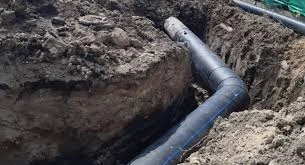
Introduction
When working with PE pipes, particularly in gas applications, precision and reliability are paramount. PE pipe cutters are specialized tools designed to make clean, accurate cuts in PE pipes, ensuring that installations and repairs are effective and secure. This article will delve into the importance of using the right PE pipe cutter for gas applications, explore the various types of cutters available, and provide guidance on selecting and using these tools effectively.
Understanding PE Pipes in Gas Applications
What Are PE Pipes?
PE pipes are widely used in gas distribution systems due to their durability, flexibility, and resistance to corrosion. They are ideal for transporting natural gas and other gaseous fuels over long distances.
Why Cutting Accuracy Matters
In gas applications, accuracy in cutting PE pipes is crucial for:
- Sealing Integrity: Ensuring that joints and fittings seal properly to prevent leaks.
- System Safety: Minimizing the risk of gas leaks which could pose safety hazards.
- Operational Efficiency: Achieving a clean cut helps in maintaining the efficiency of the gas distribution system.
Types of PE Pipe Cutters
1. Ratchet Pipe Cutters
Features
- Mechanism: Uses a ratcheting mechanism to gradually cut through the pipe.
- Design: Typically has a sharp, hardened steel blade for clean cuts.
- Size Range: Available in various sizes to accommodate different pipe diameters.
Advantages
- Efficient Cutting: Requires less manual effort compared to manual cutters.
- Precision: Provides clean, straight cuts, which are essential for gas applications.
2. Scissor-Type Cutters
Features
- Mechanism: Operates like a pair of scissors with two blades that shear the pipe.
- Design: Often lightweight and designed for easy handling.
Advantages
- Ease of Use: Simple to operate and ideal for smaller diameter pipes.
- Portability: Lightweight and easy to carry on-site.
3. Rotary Cutters
Features
- Mechanism: Uses a rotating blade that cuts the pipe in a circular motion.
- Design: Typically includes a clamp to hold the pipe steady during cutting.
Advantages
- Clean Cuts: Provides smooth, burr-free cuts.
- Versatility: Suitable for a range of pipe sizes and types.
4. Pipe Cutting Saws
Features
- Mechanism: Uses a powered saw blade to cut through the pipe.
- Design: Equipped with a motor and saw blade for efficient cutting.
Advantages
- High Efficiency: Ideal for cutting larger diameter pipes quickly.
- Precision: Provides accurate cuts with minimal effort.
Choosing the Right PE Pipe Cutter
Consider Pipe Size and Material
Select a cutter that matches the diameter of the PE pipes you are working with. Ensure the cutter is designed to handle the specific material properties of PE pipes, which can vary based on density and thickness.
Evaluate Cutting Precision and Ease of Use
For gas applications, precision is critical. Choose a cutter that provides clean, accurate cuts with minimal effort. Consider factors such as:
- Cut Quality: The ability to make straight, smooth cuts.
- User Comfort: Ergonomics and ease of operation.
Assess Durability and Maintenance
A cutter used in gas applications should be durable and easy to maintain. Look for:
- Construction Materials: High-quality, corrosion-resistant materials.
- Maintenance Requirements: Ease of cleaning and blade replacement.
Budget and Brand Reputation
Consider your budget and opt for a cutter from a reputable brand known for reliability and quality. Investing in a high-quality tool can lead to better performance and longevity.
Using a PE Pipe Cutter Effectively
Preparation
- Safety Gear: Wear appropriate safety gear, including gloves and safety glasses.
- Pipe Inspection: Inspect the pipe for any defects before cutting.
Cutting Process
- Marking: Mark the cutting line clearly on the pipe.
- Positioning: Secure the pipe properly in the cutter to prevent movement.
- Cutting: Use steady, controlled pressure to achieve a clean cut. Avoid forcing the cutter, which can lead to uneven cuts.
Post-Cutting
- Deburring: Remove any burrs or sharp edges from the cut pipe to ensure a smooth fit with fittings.
- Inspection: Check the cut pipe for accuracy and any signs of damage.
Conclusion
Choosing the right PE pipe cutter is essential for ensuring the integrity and safety of gas distribution systems. By selecting a cutter that suits your specific needs and using it properly, you can achieve precise, clean cuts that contribute to a reliable and efficient gas piping system. Whether you opt for a ratchet cutter, scissor-type cutter, rotary cutter, or pipe cutting saw, ensure that the tool meets the requirements of your application and provides the performance needed for optimal results.
FAQs
1. What is the best type of PE pipe cutter for large diameter pipes?
For large diameter pipes, a rotary cutter or a pipe cutting saw is generally the best choice due to their efficiency and ability to handle larger sizes.
2. How often should I replace the blade on my PE pipe cutter?
The blade should be replaced when it becomes dull or starts to produce uneven cuts. Regularly inspect the blade and replace it as needed to maintain cutting performance.
3. Can I use a standard pipe cutter for PE pipes?
Standard pipe cutters can sometimes be used for PE pipes, but it’s best to use a cutter specifically designed for PE to ensure clean, precise cuts and avoid damage.
4. How can I maintain my PE pipe cutter?
To maintain your PE pipe cutter, keep it clean and lubricated. Regularly inspect and sharpen or replace the blade as needed, and follow the manufacturer’s maintenance guidelines.
5. Are there any safety precautions I should take when using a PE pipe cutter?
Yes, always wear safety gear such as gloves and eye protection. Ensure the pipe is securely positioned and avoid placing your hands near the cutting area during operation.